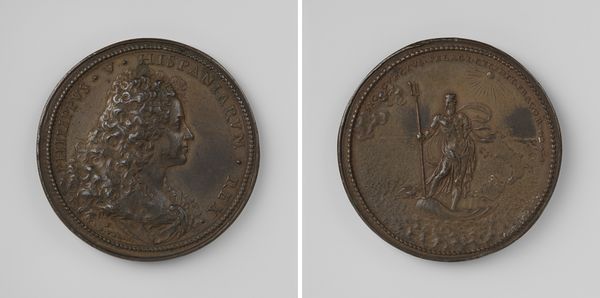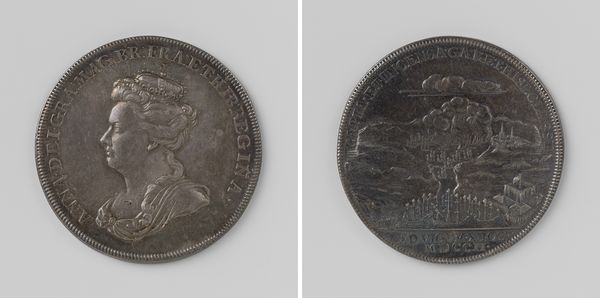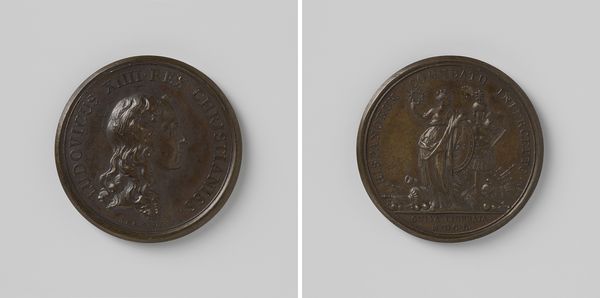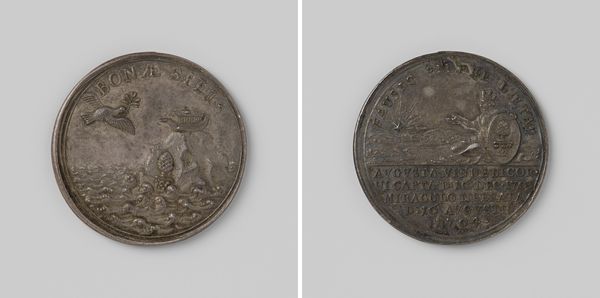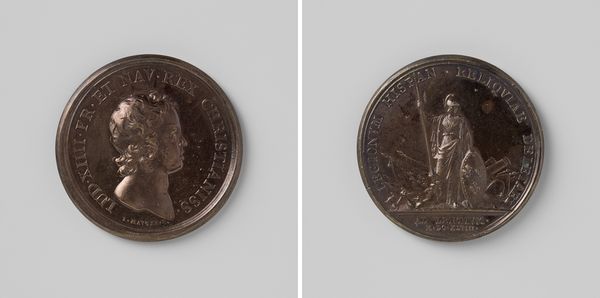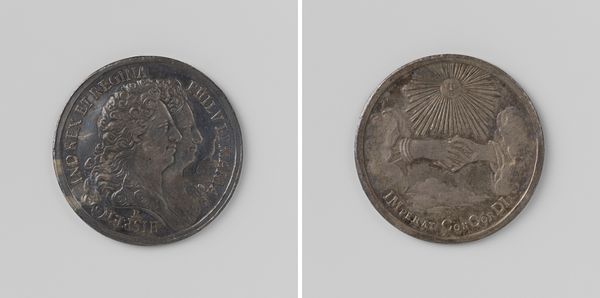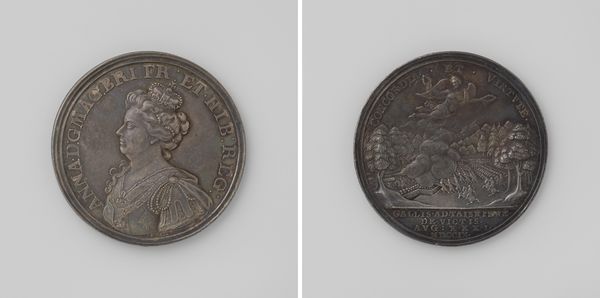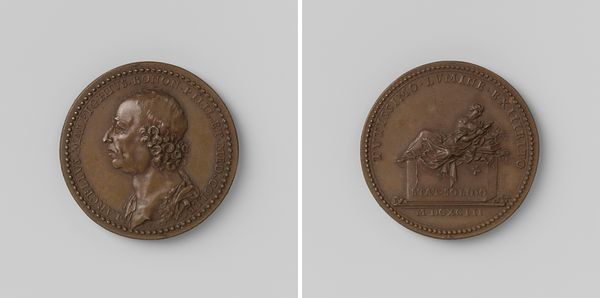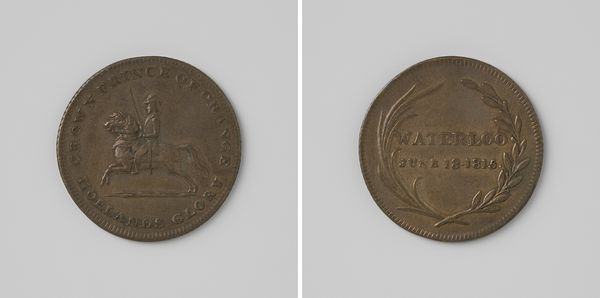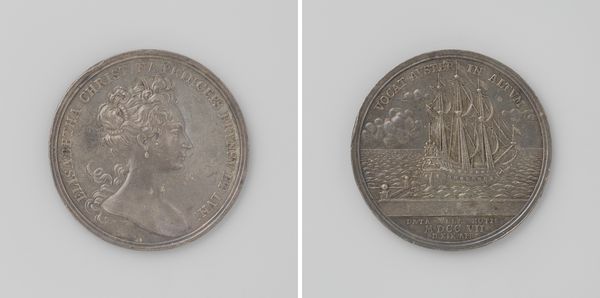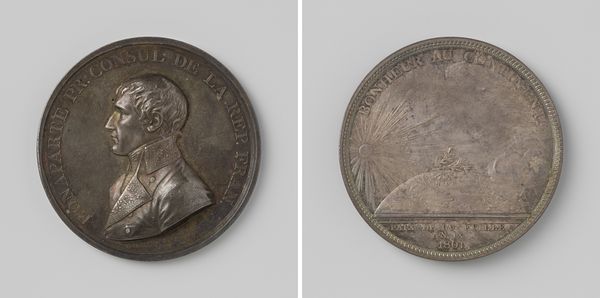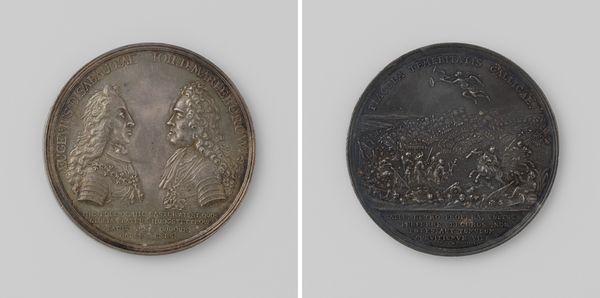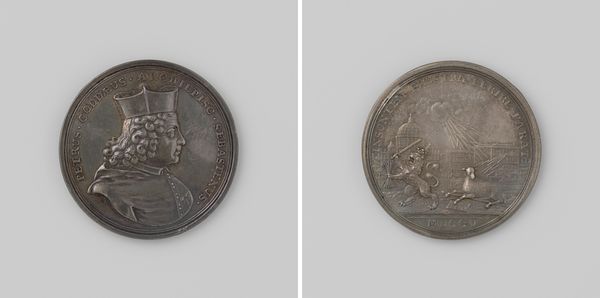
Verdragen van Chambord en Friedewald tussen Hendrik II en de protestantse Duitse vorsten 1600 - 1650
0:00
0:00
print, metal, bronze, sculpture
#
portrait
#
medieval
# print
#
metal
#
sculpture
#
bronze
#
sculpting
#
sculpture
#
ceramic
Dimensions: diameter 6 cm, weight 60.35 gr
Copyright: Rijks Museum: Open Domain
Editor: Here we have "Verdragen van Chambord en Friedewald tussen Hendrik II en de protestantse Duitse vorsten," a bronze or metal print made sometime between 1600 and 1650 by an anonymous artist. It's small but impactful! There is the portrait of a regal gentleman and then the other side features the image of a hat between two swords. How do you interpret this work through a historical lens? Curator: This piece provides a fascinating glimpse into the political and religious landscape of 16th-century Europe. Notice how the imagery on both sides speaks to power, freedom, and the fraught negotiations happening at that time. Consider, for a moment, the treaties alluded to in the title – Chambord and Friedewald – alliances forged between France and Protestant German princes against the Holy Roman Empire. Editor: Right, the title is packed with information, and you can't understand this coin without it! Curator: Exactly. Now, look closely at the side with the hat and swords. That hat is a symbol of liberty, often associated with republican ideals and freedom from oppression. The swords, obviously, represent military might. Their positioning flanking the hat suggests a willingness to defend this liberty, but it also speaks to inherent conflict. Editor: So, this isn't just about freedom; it's about *fighting* for it? Curator: Precisely! And fighting within a very specific context. This medal celebrates alliances that, while offering liberation for some, actively challenged existing power structures and contributed to the era's religious wars. Do you see it as a celebration or perhaps a more complicated commemoration? Editor: I initially just saw a historical artifact, but now, understanding the context of the treaties and symbols of liberty and conflict, it feels more like a call to action— or, at least, a statement of the times. Curator: Indeed! It reveals the ways in which art served as a form of political propaganda, designed to galvanize support for particular ideologies and agendas during a turbulent era. Seeing the intersections between power, belief, and artistic representation truly unlocks history in tangible form.
Comments
No comments
Be the first to comment and join the conversation on the ultimate creative platform.
